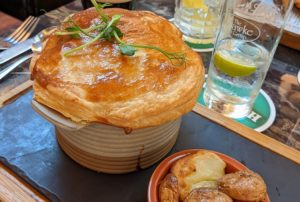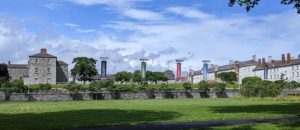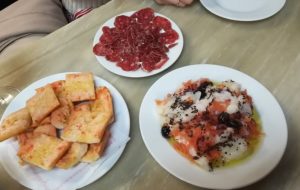In the seventh in a series of weekly blogs, IAFS/Learn intern Lauren Nofi reports on the first week without the IAFS winter program students.
Salutations! This week has been super quiet without our students, but we’ve all been hard at work in post-ex. We have a lot of artefacts to wash, label, and organise for storage. Right now, our post-ex staff consists of me, fellow intern Ciarán McDonnell, and a local student interested in archaeology and history.
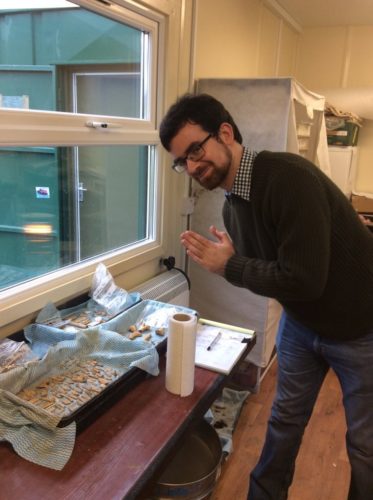
Would you believe he has a PhD, yet he still pays homage to my expert cleaning of animal bone!
Our post-excavation lab is on-site, meaning we were actually able to have students working in post-ex concurrently with those excavating. We had a backlog of material from the previous summer season which clearly provided tons of data we are still compiling, so much of the work involved the immense quantity of artefacts found in the summer of 2015. This season, which was shorter and involved different areas of the cuttings such as rubble spreads from walls, produced less material but also answered or made us reexamine questions from the previous season. I’ll talk a little bit about the very cool objects we did find, however, in a future blog. For now, I would like to discuss a bit of our post-ex process: bone-washing!
Bones on our site are catalogued and processed as samples, as opposed to finds. Some sites differ on their handling of bones, but for us, we want to preserve them and have them examined by a specialist so we take great care in our processing. We have three separate processes to wash bone, as we encounter both animal and human bone on site. Human bone is encountered in two main scenarios: as an articulated burial or as disarticulated remains. This blog with discuss the processes for animal bone and disarticulated human bones. All of these processes involved a good bit of paperwork to allow us to keep track of every sample in every bag from every feature at any point in their long journey through post-ex. Our post-ex structure is definitely the most thorough finds and sample processing system I have ever encountered, and it’s actually a relief to be so meticulous. I like knowing exactly where everything is when I am working on finds and sample processing, and our system makes it almost stress-free because of our rigorous registering, labelling, and cataloguing.
When animal bone was excavated, it was placed in a bag labelled with the site code, feature number, and date of excavation (along with some other tidbits of info like the initials of the excavator). It was also registered in a ledger and assigned a unique sample number, which is also written on the bag. When it is time to wash these bones, this information is all copied onto a permatrace label used to identify the sample while it is drying. The washing date and initials of the washer are also added to the label. The pertinent info for this process is recorded in another ledger in a section strictly for the washing of animal bone.
Ciarán accepts the ‘no lip licking ‘till you are finished’ doughnut challenge – it is pretty quiet here without the students!
Survival rations for the Irish winter! The doughnuts have strawberry jam in them, and between them and the APPLE chews and the LEMON & LIME in the 7-up, this is a nutritious lunch.
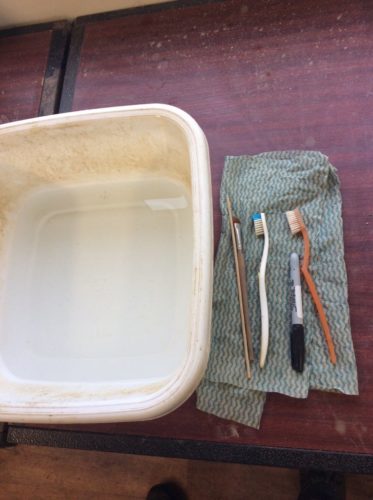
The actual washing bit is usually pretty relaxing. We used toothbrushes and paintbrushes to gently remove soil from the bones, bringing the water to the bone on the bristles rather than placing the bone in the water. The bones themselves are relatively stable, but soaking them in water would soften them and saturate them, making their drying process more complicated and heightening the probability of damage. The cleaned bones are placed on a drying rack one sample per container, though we have varying sizes to accommodate our differing sample sizes. The permatrace label we made earlier is here displayed.
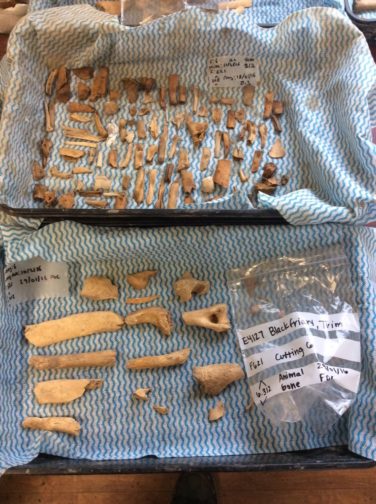
We have an area of the post-ex lab reserved for drying samples, but our efficient washing over the past week actually outstripped the speed of drying, so there was something of a space-issue. Instead, the whole lab is now a giant dryer, so as we work it’s actually quite toasty!
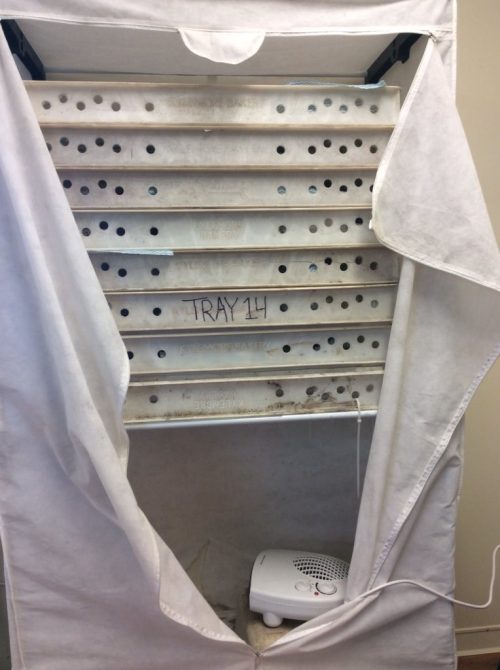
The process for washing disarticulated human bones is slightly similar. We have a register for disarticulated remains, and each excavated assemblage (which may consist of one or more bones) is assigned a DHB (disarticulated human bone) number. Again, the entire process is recorded in a section of the washing register, this time specifically for DHB.
The actual handling of these human remains is always gentle and with a good deal of almost…reverence? Awe is perhaps an even better descriptor. Here we have in our hands the bones of the very people who lived and worked in this town, even at this friary, and the cleaning and care of these bones is a job we undertake with all seriousness. I always have something of an existential crisis whenever I work with human skeletal material. These bones once allowed someone in a completely different time to walk across the same ground I’m standing on. These skulls once held someone’s entire consciousness. It boggles my mind, and it makes me feel at once connected to this person about whom I know very little. And I think this continued wonder, whether you’re an archaeology student or a professional with decades of experience, is absolutely essential to your role as archaeologist. Without this wonder, without this curiosity tempered with respect and allegiance to scientific enquiry, who are we? Our entire field revolves around the material evidence of the human experience, so please please please never lose your sense of wonder when you are excavating or undertaking lab work.
Out of respect for both the individuals we have excavated and the descendant community, no photos of these remains will be shown in this blog. In future excavation reports, there will likely be images of some of our burials, but please understand this is done with all ethical intention for the purposes of scientific study, and we have taken the greatest care in handling all of the human remains we have encountered.
So long for now! I’ll be back next week with more post-ex updates!
